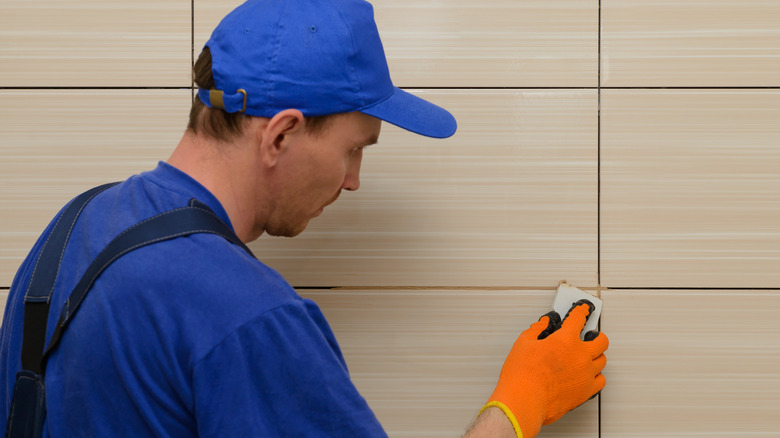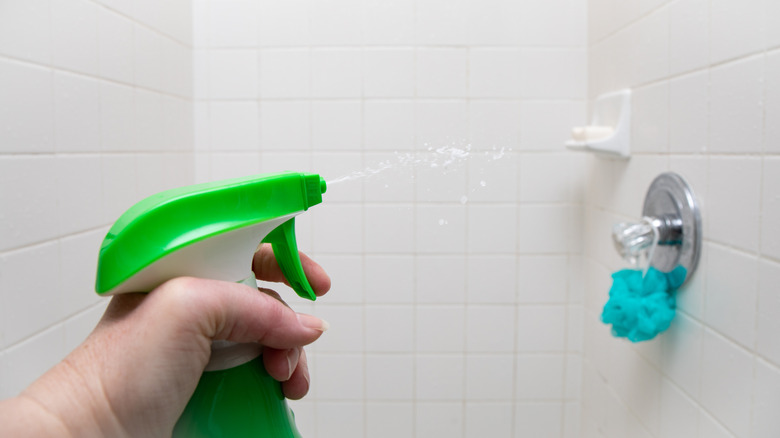Find Out If Your Grout Needs Resealing With One Simple Trick
If your home's pervious owner was responsible for installing tile in your bathroom, kitchen, or wherever else, or if your house is of a certain age and you'd like to attend to what needs to be updated, one place to consider checking is the grout that lines all your tiles. Easily enough, testing just one small section of the grout will suffice. The reason you want to do this? Mold and bacteria. The last thing you want to deal with anywhere in your home is mold, and if water gets behind your tiles through porous, unsealed grout, mold can appear.
There is a very easy way to test if your grout needs to be resealed and all you need is plain water for this simple trick. If after doing this little experiment you discover that it's unsealed, we strongly recommend you either seal it yourself or hire a professional to do so. This water test takes only a few minutes.
How to tell if your grout needs resealing (plus a bonus tip)
Grab a clean spray bottle and fill it with water. Spray a mist of water onto the dry grout and let it sit for a few minutes. Then, see if the droplets of water bead and roll off; if they do, it's sealed. Alternatively, if the line of grout you moistened has soaked up the water and darkened significantly compared to its grout neighbors, it's likely unsealed.
Even if you plan to reseal your grout, if your test revealed the grout is unsealed and you've noticed mold, your best bet is to clean it with hydrogen peroxide, which is safe to use on a porous surface. For even better results, mix the hydrogen peroxide with baking soda to make a paste. Let it settle on the grout for about 10 minutes before scrubbing it off. Rinse with water and dry using a microfiber cloth. Just be careful to avoid using vinegar if you have ceramic tiles, as the two don't mix.

